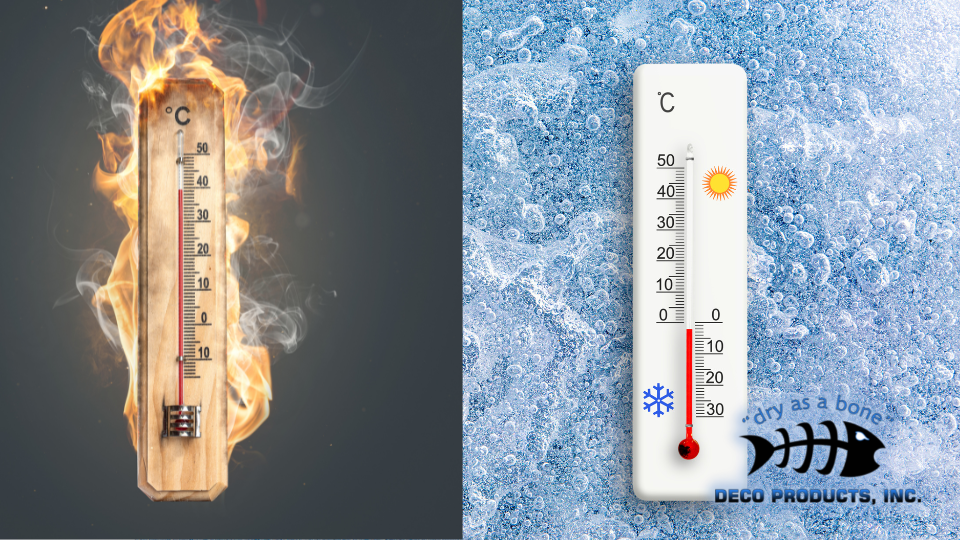When is the Best Time to Seal Pavers?
The perfect temperature matters when you are sealing your pavers. Many of things can go wrong when you seal substrates that are too hot or the temperature makes the product too cold. Let’s find out why temperature plays an integral role in a successful seal job.
It’s Cold as Ice
This is exactly what can happen if you seal in too cold of temperatures. Your sealer can freeze! You don’t want the temperatures to be so low as to affect the viscosity of the product, like in the cooler months, from being able to freely flow through the sprayers or absorb into your pavers. If it’s too cold the product will be thickened and not able to absorb into the substrate as freely as it would on a warmer day.
Another thing to consider is that when temperatures are low, moisture can get trapped in the substrates. This can cause efflorescence and moisture to appear as a haze once the temperature rises and the substrate dries.
What’s ideal in cold weather to seal? Definitely not when the temperature is freezing! 50° or above is recommend ground temperature. Ground temperature is important because the air can be warmer than the ground and the ground helps the substrate stay warm enough for the water in the substrate to dry. So be patient enough for the warmer temps…but not too warm.
@decoproductsinc Problem Solved!! What is Flashing?? Why does it happen?? #decoproducts #teamdeco @markt316
Some Like it Hot
Just not us…like Mark Tuliano says in his Mark’s Remarks video, and we agree, your pavers are just too hot to seal in the rising afternoon temperatures of the summer months. The increased heat can cause flash drying to occur on your pavers, if you seal them in the afternoon, making morning the prime time of day for sealing in the warmer months.
So, if you’re trying to seal on a hot day you may want to pull out your temperature gun and get a good reading on the pavers you are about to seal. If they’re too hot your product could flash dry. Flash drying is when the substrate you’re trying to seal is so hot that the sealer starts to dry before it’s had an opportunity to properly penetrate or adhere. This can cause streaking to occur throughout your surface and cause your sealer to not properly waterproof the substrate.
How hot is too hot you ask? Well the air temperature should be less than 95 ° and your surface temperature should be less than 105-110°. We highly recommend investing in a temperature gun, they are worth the money you pay, and you’ll save yourself lots of upsets on jobs than if you had waited the extra day the job would have come out spectacularly.
@decoproductsinc What should you seal early in the morning?? #decoproducts @markt316 @exclusivewashandseal
At Deco Products not only do we offer you the best products to use, but we also offer free skilled training on how to use them. Sign up to get information for our free training events by texting DECO to 85100. And to learn more about the great opportunity to offer sealing with your business, contact Deco Products today!







